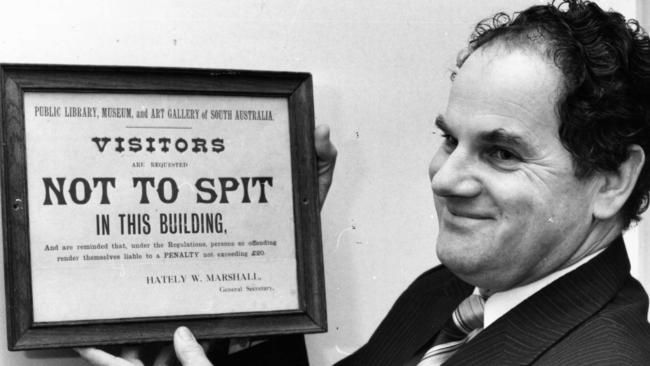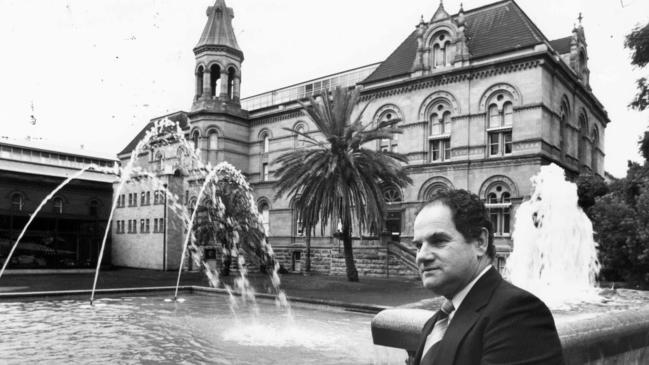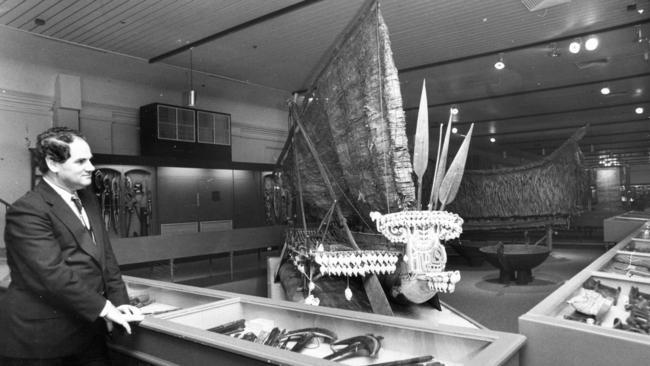Without Bob Edwards, Australia would have lost so much of its First Nations past
Bob Edwards was an anthropologist and archaeologist whose fascination with the art and lives of First Nations Australians preserved so much for future generations.

OBITUARY
Bob Edwards
Cultural historian. Born Adelaide, April 7, 1930; died Sydney, May 22, aged 93.
Long before the 1967 referendum that resulted in Indigenous Australians finally being counted in the national census, a wave of academics, well ahead of national thinking, was already charting, recording, filming and chronicling the lives, languages, social structures, ceremonies, art and songs of the many tribes across the continent.
Ethnography became quite fashionable in the 1960s as researchers across the world sought to record “disappearing tribes” – the Mursi people of Ethiopia, the Maasai of Kenya, the Nenets of Siberia. Presciently, a handful of researchers from Australian universities had been on the case for years by then.
The first official efforts to codify the information that was gathered across Australia were perhaps clumsy but of their era; the early government organisations had no Aboriginal or Torres Strait Islander representation.
For men such as Bob Edwards it must have been unthinkable that we did not count Indigenous Australians, because he had long been aware that their lives, and especially their art, counted a great deal. Edwards had been raised on a farm near Edwardstown, today consumed by Adelaide’s suburban sprawl, and he became keenly interested in Aboriginal stone tools that he would find on the banks of the Sturt River.

He became a regular visitor to the South Australian Museum. These days its Australian Aboriginal cultures gallery includes more than 3000 pieces – many of them collected on field trips, sometimes to the far north of the state, that Edwards took part in as a youngster.
His deep interest in Aboriginal culture was matched by his unpatronising friendship with the men and women he met while in pursuit of it. He respected their attitude to the art and materials he collected and made sure this correlated with those of the institutions that would hold, keep safe and possibly exhibit the often inspiring tangible evidence of their lives and history.
Edwards would lead or serve about 80 federal, state and private arts and heritage organisations in a life dedicated, at least in the early decades, to preserving Indigenous art, supporting the artists and bringing their work to the rest of Australia and the world. He could form easygoing, trusting relationships with ministers as he argued for greater funding for various projects, and he was equally and productively connected to Indigenous leaders with whom he spent so much time. “He was politically articulate,” said one former colleague. “And so few academics are.”
The senior curator, anthropology, at South Australian Museum, Philip Jones, described Edwards’s respectful approach to his role as inaugural chair of the Aboriginal Arts Board of the Australia Council as “deeply consultative”; he quickly brought leading Aboriginal players on to the board and held meetings at locations more meaningful to them than the carpeted portals of Canberra. He did much for such people; they did much for him.
Edwards was a self-taught photographer and brought those skills to recording in detail Aboriginal rock art. Jones, who now looks after the collections Edwards created, said Edwards’s “pioneering work at Koonalda Cave, deep beneath the Nullarbor Plain in South Australia, opened up the field of rock art and artistic expression to prehistorians in Australia”.

In his long commitment to Australia’s cultural coming of age Edwards worked as a curator of the South Australian Museum, after which he was deputy head of the Institute of Aboriginal Studies, founding director of the Aboriginal Arts Board and then founding director of Museum Victoria, Australia’s largest.
Then, in 1982, as chief executive of Art Exhibitions Australia, he pulled off perhaps his greatest coup – using his respected intellect, understanding and powers of persuasion – to convince the government Hu Yaobang, then the new leader of China’s Communist Party, to send to Melbourne some of the famed terracotta warriors.
The subterranean army of life-size guardians had been discovered accidentally by farmers only six years earlier and even in China they had been on partial display for just three years. It was their first time out of China. The Entombed Warriors exhibition broke attendance records, giving birth to the blockbuster exhibitions now such a part of the lives of the bigger galleries and museums.
Later, Edwards was first chairman of the National Portrait Gallery from 1997 to 2000 and directed its collections strategy, and later still served on the board of the Stockman’s Hall of Fame.
Edwards’s curiosity in, and later deep understanding of Indigenous culture, and his conviction that he was obliged to collect and show it to Australians so it was preserved and appreciated, helped safeguard much that a sometimes unseeing nation might have built over, “developed” and lost.




To join the conversation, please log in. Don't have an account? Register
Join the conversation, you are commenting as Logout